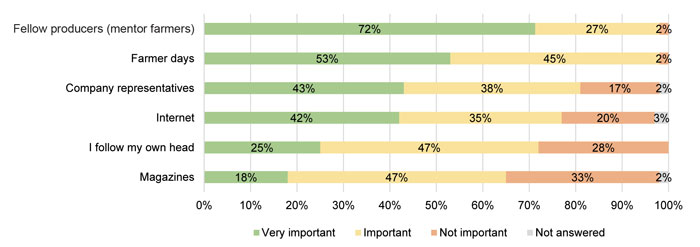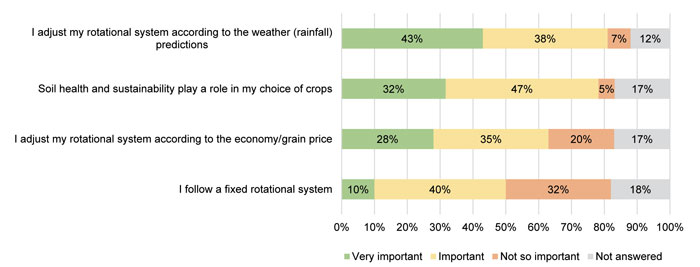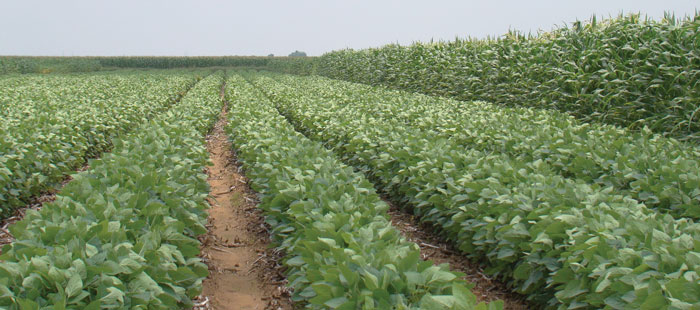
PhD student, Free State University and co-worker of the Sandy Soil Devel-opment Committee
 Dr André Nel, agronomist and co-worker of the Sandy Soil Development Committee
Dr André Nel, agronomist and co-worker of the Sandy Soil Development CommitteeCrop rotation has the potential to alleviate some of the many challenges faced by the producers and communities of the north-western Free State.
Studies suggest that by diversifying crops, producers prevent nutrient losses and have the potential to maintain high production levels with less fertiliser. These benefits improve soil health and structure, and moisture holding capacity which in turn improve root growth and root vigour, resulting in a healthy, high-yielding plant.
For many decades maize in this part of the Free State has been grown in monoculture. This was due to a generally high and stable maize price, the use of mineral fertilisers and pesticides as well as the unique climate and soil conditions. Although mineral fertilisers replenish soil nutrients and pesticides control diseases and pests, prolonged use of these chemicals has shown to have undesirable effects on the environment. In addition, the hot summers, mild winters, and non-oscillating patterns of low rainfall seasons of the area, together with its sandy soils, limit the crop options available for rotation.
Recently, the area has shown a shift towards crop rotation, with many producers rotating their maize with soybeans, sunflower and/or wheat. However, because of the unique climate and soil characteristics, applying already-proven successful rotational programmes is not always viable. The challenge is to find sustainable crop rotation systems that involve suitable and profitable crops ideal for the environment. Understanding the factors influencing crop rotation decisions is an important starting point to determine successful crop rotation programmes specific to the area.
A recent study was conducted whereby producers from the north-western Free State were approached to complete a uniquely designed questionnaire which determined the factors influencing crop rotation decisions. A total of 60 producers participated in the study. The majority recognised the relevance of crop diversification, especially with regard to yield increase, improved soil health and increased farm profit.
Producers acknowledged the importance of fellow producers (mentor farmers) and farmer days as sources of technical information or guidance regarding crop rotation (Figure 1). Information sharing, whether it be through mentorship from a more experienced person or a fellow producer in similar circumstances, is what seems to guide them into making crop rotation decisions. Farmer days are generally attended by a range of professionals, including researchers, scientists, and producers. This provides the ideal platform for sharing knowledge, discussing and solving problems.

When it comes to putting crop rotation knowledge into practice, the producers did not consider following a fixed rotational system as very important, but rather adjusted their rotational system according to the weather (rainfall) predictions (Figure 2). Rainfall patterns play an essential role in the outcome of crop rotation programmes. The root systems of sunflowers and soybeans reach much deeper into the soil than maize, making use of moisture deeper in the ground. In a dry season the ‘dried up’ soil will negatively affect the following maize yield. Alternatively, in a wet season sunflowers and soybeans could use up the excess moisture, providing ideal conditions for the subsequent maize crop.

In conclusion, producers from the north-western Free State are showing promising movement towards crop rotation as a form of diversification in order to farm sustainably. They are also aware that crop rotation relies heavily on climatic conditions and that seasonal adjustments to crop rotation systems are required. It is important to note that every season will probably see an exception to the rule – therefore continuous discussions and information sharing among producers are vital in developing successful crop rotation systems.




























